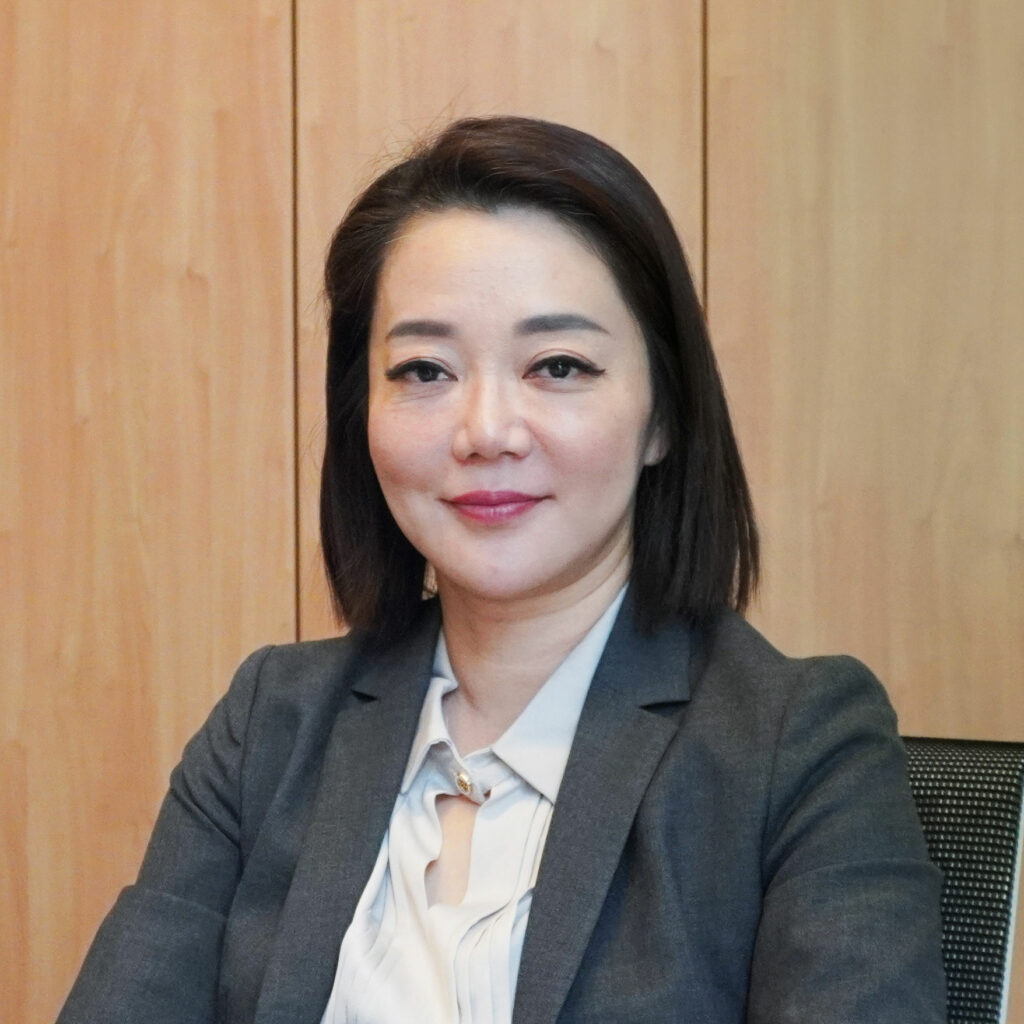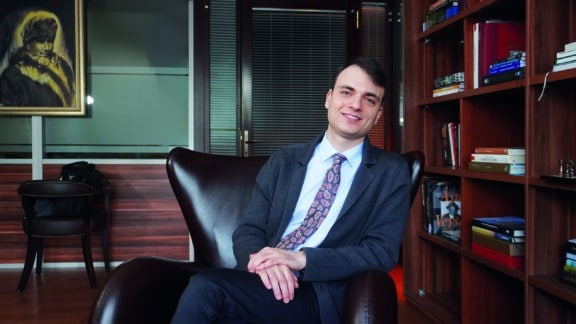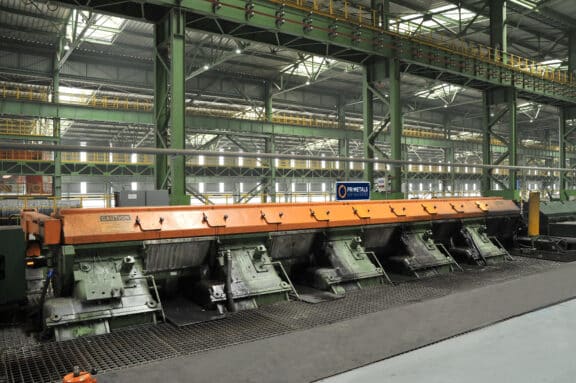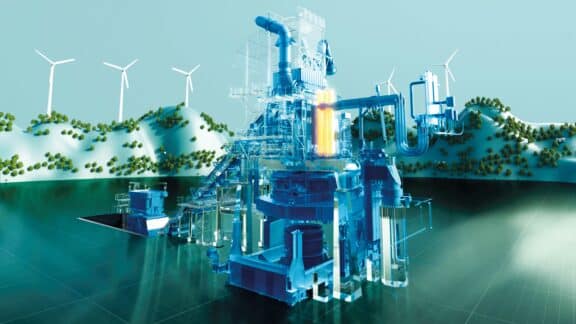Walsin Lihwa, headquartered in Taipei, Taiwan, recently obtained a new stainless steel combination mill from Primetals Technologies. The strategic investment in the new solution will facilitate the annual manufacture of 420,000 tons of stainless steel and nickel alloy products. Metals Magazine spoke with Sherry Ho, the company’s president of corporate strategy and supply chain management. We discussed the company’s mission and roadmap for the years ahead.
Walsin Lihwa will soon be celebrating its 60th anniversary. What does this milestone mean to you?

Sherry Ho: We have grown considerably since our founding in 1966. Our first step was to manufacture cables, but in 1993, we decided to form a joint venture with a well-established partner company to enter the Taiwanese special steel market. We expanded into China in the 1990s and Indonesia in 2019, ensuring a stable nickel supply. Our most recent move was to begin building a strong European presence. Walsin’s 60th anniversary marks a milestone of remarkable growth fueled by strategic partnerships and global expansion. We firmly believe that collaboration is our core value, and moving forward, it will remain the cornerstone of our success in strengthening leadership across our sectors. Incidentally, collaboration and our European partnerships are also what brings me to Frankfurt today, allowing us to meet.
How large a company is Walsin Lihwa today?
Ho: We have 25 factories worldwide, 15 of which make stainless steel. Our annual output of billets, slabs, and ingots alone amounts to 1,200,000 tons, and we have become a global leader in wire rod, cold-rolled steels, and seamless pipes and tubes. Our main production sites and sales offices are in Taiwan and Mainland China, but we are expanding to other regions, such as Europe. Overall, we have more than 20 distributors for our stainless-steel portfolio.
We now have 25 factories, and our annual output of billets, slabs, and ingots amounts to 1,200,000 tons.”
Can you tell me more about your recent acquisitions in Europe?
Ho: They initially grew out of the economic disruption caused by the Covid-19 pandemic. We found it a sensible strategic move to start collaborating with European partners to strengthen our position via geographical diversification and supply chain resilience. In 2022, we acquired CAS, which, as a significant milestone, enabled us to set up a physical presence in the region. Consequently, we acquired the companies SMP, DLP, Inox, and DMV, formerly MST. As a result, we can now offer a greater variety of premium products and have become a vertically integrated powerhouse in stainless steel and beyond.
How did you personally start out in the steel industry?
Ho: I studied law and business management before joining the company in 2009. I feel I have grown as an individual as the company expanded its reach and capabilities. Initially, I was tasked with managing several select projects, and I now serve as Walsin’s president of corporate strategy and supply chain management.
What does your current role entail?
Ho: I think of myself as the architect of our company’s future. As president of corporate strategy and supply chain management, I am, on the one hand, responsible for the development and execution of strategic initiatives that drive our growth. On the other hand, I manage our supply chain, cultivating strong supplier relationships. At Walsin, we aim to create an ecosystem that promotes internal and external collaboration. While guiding our teams to overcome external challenges, I also work closely with our partners to integrate high-quality suppliers into our network. This dual focus—strengthening our internal strategy and expanding external reach—is crucial to securing long-term success.
What do you enjoy most about working at Walsin?
Ho: I cherish the dynamic and collaborative environment. The company fosters a culture of innovation and continuous improvement, allowing us to tackle challenges creatively and effectively. Working with a talented and dedicated team with a shared vision is inspiring. Every day brings new opportunities to learn, grow, and make a meaningful impact.
How is your agenda impacted by new trends, such as artificial intelligence?
Ho: As a company, we strive to take advantage of opportunities as they present themselves. Several projects are underway to adapt and transform the company to employ new technologies, including artificial intelligence, wherever it makes sense. Thanks to new technologies, we can achieve more with less effort. Our factories effortlessly explore ways to deploy AI and automation, eliminating monotonous tasks in frontline jobs and automating repetitive, hazardous duties in steelmaking. Walsin was founded In Taiwan, sometimes called “Chip Island” for its robust semiconductor clusters, and therefore, we thrive in a culture of innovation. We openly embrace new technologies, integrating them into strategic initiatives, streamlining workflows, upscaling our workforce, and capitalizing on emerging opportunities.
Founded in 1966, Walsin Lihwa entered the steel industry as a wire and cable manufacturer before expanding into stainless steel production in the 1970s. Headquartered in Taiwan, the company has grown into a prominent global player in the stainless steel industry, with a presence in Taiwan, China, Indonesia, and several European countries. Walsin Lihwa’s state-of-the-art production facilities focus on high-quality stainless steel products, including bars, rods, and wire, catering to a wide range of sectors. Today, the company is renowned for its focus on innovation and sustainability, consistently implementing eco-friendly practices in its manufacturing processes. As the demand for high-quality stainless steel continues to rise, Walsin Lihwa is positioning itself as a leader in stainless steel production, using new tools such as artificial intelligence and next-level automation. Looking to the future, the company aims to further expand its market share while focusing on advanced technologies and green solutions to meet the evolving needs of global industries.
What intrigues you most about the steel industry?
Ho: It is a fundamental industry without which sectors like construction, automotive, renewable energy, aerospace, and many others would not exist. The world of steel is where tradition and innovation meet, forming a unique and harmonious union that never ceases to fascinate me. Also, our industry’s focus on sustainability and reducing environmental impact profoundly resonates with my values, and I fully support my company’s commitment to responsible business practices.
Introducing the new stainless steel combination mill at Yantai Walsin has been a transformative milestone for our company.”
Primetals Technologies recently installed a new stainless steel combination mill at Yantai Walsin. What results are you seeing?
Ho: Introducing the new stainless steel combination mill at Yantai Walsin has been a transformative milestone for our company. This cutting-edge production facility has extended our capacity and enhanced our capabilities, enabling us to deliver 420,000 tons of stainless steel and nickel alloy products annually. The new mill meets and exceeds our expectations, allowing us to meet the growing demand for high-quality stainless-steel products in the more significant Chinese market.
Did the new mill resolve any issues you had faced?
Ho: Before installing the new mill, we faced challenges with unstable delivery timelines and limited production capacity. This was because we had to outsource the production step of rolling steel billets into hot-rolled bars and coils. The new facility has completely solved this problem for us. It allows us to expand the scope of steel grades and product sizes we can manufacture. Also, it has significantly increased our output and is driving sales growth. Aside from these capacity gains, the advanced technology integrated into the mill has dramatically improved our production process. With in-line processing’s enhanced precision tolerances, superior surface quality, and greater efficiency, we have reduced production costs while delivering exceptional quality. The new mill was a strategic investment, and I am glad it has paid off. It has strengthened our production capacity and commitment to meeting the highest industry standards.
How happy are you with this new mill? Has it met your expectations?
Ho: I am pleased with the new mill. I sincerely appreciate the professional team at Primetals Technologies, whose expertise and efforts during the trial run and throughout the entire process made a big difference. Whenever we encountered any challenges, we worked together to resolve them seamlessly. The successful completion of this project is thanks to the hard work and deep collaboration between our team and Primetals Technologies. Their profound knowledge and dedication played a crucial role in helping us achieve our production goals, and we are delighted with the results.
Is there a specific aspect of the project you find particularly beneficial?
Ho: I think the inline quenching system, part of the bar-in-coil outlet for austenitic and ferritic products, is a remarkable feature of this project. It significantly reduces the need for annealing in post-processing, increases efficiency, and lowers overall costs. Another key asset is the state-of-the-art quality control system that Primetals Technologies provides. It allows us to monitor all production-related signals and process parameters in real-time. This capability helps us quickly identify product defects and maintain the highest quality standards.
The new mill will make us more competitive and help us live up to our commitments regarding sustainability and responsible business practices.”
Has the new mill reduced the need for manual labor?
Ho: Yes, we are also noticing an impact on human resources. Several factors contribute to our efficient deployment of labor. The mill uses hydraulic and servo motors to adjust the roll gap, and it can switch between different roll grooves. This flexibility has made the production process more streamlined. Also, the integrated straighteners minimize the need for secondary handling, reducing packaging costs. Finally, iPad-based wireless operating systems have significantly enhanced our staff’s safety and effectiveness. These improvements have been pivotal in optimizing our production processes and enhancing product offerings, positioning us to deliver even greater value to our customers.
How will the mill support your company’s long-term goals?
Ho: The new mill is a cornerstone of our long-term strategy, significantly enhancing our production capabilities and allowing us to meet the growing demand for high-quality stainless-steel products. The mill will support our strong focus on the premium segments of the stainless market. We anticipate that this investment will bolster our position as a leader in the industry, expanding our market presence while staying ahead of evolving demands. It will make us more competitive and help us live up to our commitments regarding sustainability and responsible business practices.
Where do you see the future of the industry?
Ho: The stainless steel industry is at a pivotal juncture. Thanks to innovative strategies, technologies, and products, there are many challenges but also opportunities. Historically perceived as high-polluting, labor-intensive, and heavily influenced by geopolitics, the steelmaking industry is shifting toward a more sustainable, efficient, and regionally focused future. At Walsin, our strategy aligns with these trends, ensuring we capitalize on these changes by remaining adaptable to industry dynamics and prepared to evolve to meet shifting demands.
Which trends do you expect to generate the most dramatic shifts?
Ho: I think that sustainability is our most critical challenge. With the global trend toward net-zero emissions followed by implementing carbon taxes, this industry has faced tremendous pressure to reduce its carbon footprint for environmental and economic benefits. At Walsin, we have taken proactive measures to move toward greener production and reducing carbon emissions. We developed a roadmap for increasing the use of renewable energy, and I am proud to say that our plant in Aosta, Italy, is now powered by 100 percent renewables. This model will be rolled out globally to our other plants. We also think that circular economy principles are crucial. For instance, we are increasing the use of scrap in our products. We are also working to integrate the scrap-recycling business into our operations further. The acquisition of Inox is expected to establish a closed-loop supply chain for us. As green steel becomes more popular, companies prioritizing sustainability will be better positioned to meet regulatory requirements and customer expectations.
Does digitalization also play an essential role?
Ho: Yes. Terms like “artificial intelligence” and “smart factory” suggest a dramatic push for more modern production processes. Factory automation and data-driven production optimization are essential in tackling the current shortage of skilled labor. We have increased efficiency, reduced waste, and improved product quality by leveraging real-time data capture. We are also contemplating the introduction of AI to our production process at scale. AI and “digital twin” technology are fascinating: AI-driven production scheduling and predictive maintenance can help minimize downtime. Digital twins are designed to simulate new approaches to running your plant, enabling advanced optimization and product development processes. I am convinced these technologies will enhance operational efficiency and spur innovation in the steel industry.
You told me earlier that “friend-shoring” was another key concern for you…
Ho: Precisely. I use the term “friend-shoring” to highlight the importance of supply chain resilience. The vulnerabilities exposed by the Covid-19 pandemic have made this issue more prominent. Geopolitical tensions, global trade wars, and China’s overcapacity in steel have further exacerbated the problem. Friend-shoring has become a critical strategy for international enterprises to mitigate these risks and ensure a steady supply. With Walsin’s 25 manufacturing sites and 20 distribution offices worldwide, our extensive global presence allows us to build resilient supply chains and establish integrated customer ecosystems. Ultimately, they value continuity as much as we do. I am confident that by collaborating, we can overcome the challenges together and create a more efficient, sustainable, and resilient future for the stainless steel and nickel alloy industries.


